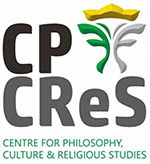Vol. 37 No. 1 (2021)

Theology and spirituality. When understanding leads to action, we are moving together with the world. When reason touches our senses, we begin to know the reality we experience. Knowing might not so much a stage of the reason as a gesture of the living self. It is also in this sense that knowing theologically should bring us back spiritually to the world of experience. There is nothing wrong with moving between the fields of theology and spirituality, for these are correlated ways of being in the world. Differences and contradictions, as well as dephts and superficialities, are mere perspectives reconcilled in conversations. And what life will look like without conversations? Spirituality brings awareness of “the other”, while theology makes sense of the ideas emerging from the encounters.
This edition of Melintas stands between these perspectives. In the dialogue of theology with the experienced realities, spiritualities surface. The articles in this edition mirror different gestures of how the authors live the dynamics of reasoning. The first article spiritually explores how Jesus teaches the disciples to pray from a practical point of view. With the prayer “Our Father”, Jesus teaches how to pray properly and correctly from particular aspects, one of which is to whom one should pray and what things one should ask for in prayer. The second article offers some models to (re)build the fraternity in the Church by delving into the spirituality inspired by Pope Francis’ Fratelli Tutti. The models bring forward particular themes like generosity without borders, all-embracing dialogue, and new encounters. The third article delves into everyday spirituality of communication among the members of Christian families. Its author proposes three models, i.e., realistic, spiritual, and imaginative communication models that may inspire families to practice communication in the light of Christian spirituality. The fourth article explores the Prodigal Son parable in Luke 15:11-32 to inspire a model of spirituality that can be used in a rehabilitation community for drug addicts, namely, the spirituality of compassion and mercy. In this spirituality, a drug addict is readmitted to the community to restore his or her dignity. The fifth article sees how the Church can support people with different abilities through its roles and services in the society. The author uses Jean Vanier’s theology of incarnation to inspire solidarity among all people who are different but created equally good by God.
Spirituality can broaden our academic horizons in doing theology. Real-world points of view are inevitable, especially when we are moving between fields and participating in everyday conversations with others. Perhaps an unveiling in our experiences is more of a discovery of the given layers rather than a construction of new ideas. Spirituality is a reality.

